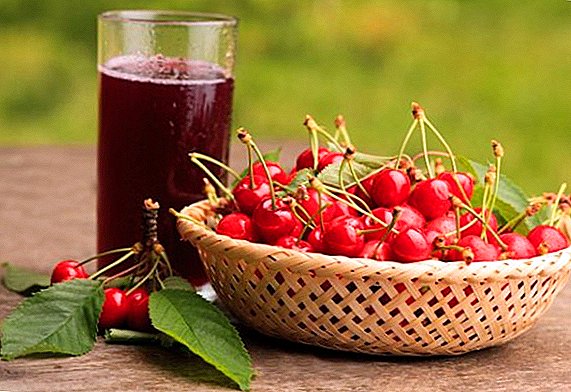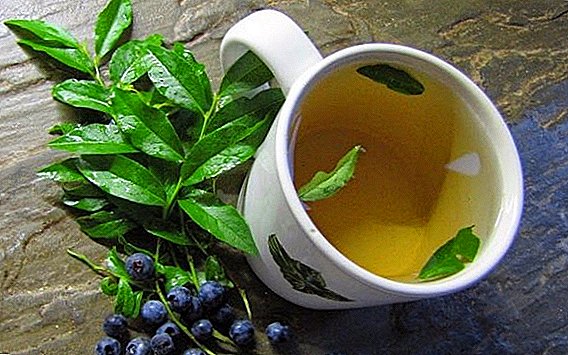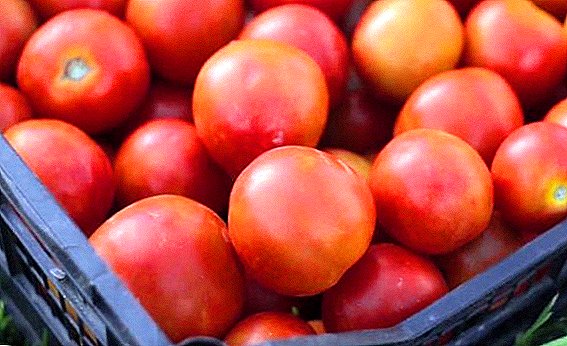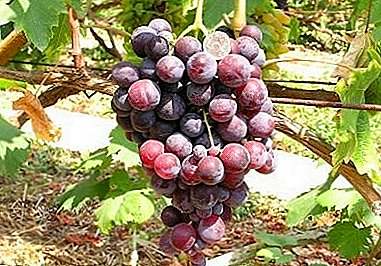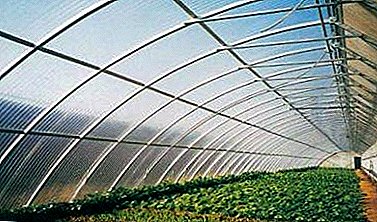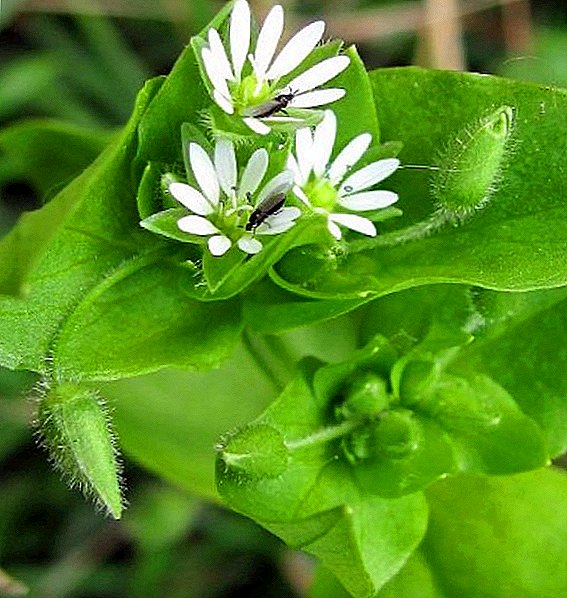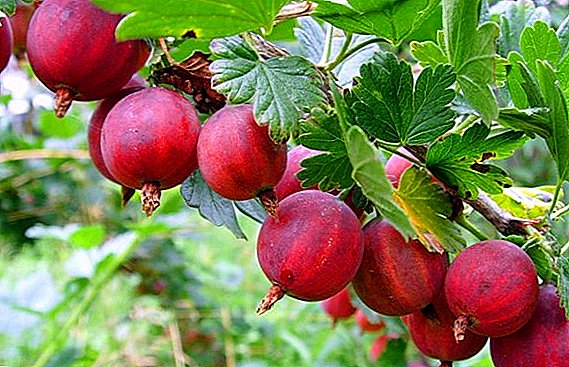 Gooseberry - one of the most common shrubs in the garden and suburban areas. And, fortunately, there are varieties that can produce great yields, while requiring minimal maintenance. One of such unpretentious, but high-yielding early-middle varieties is the "Krasnoslavyansky", which we will tell about later
Gooseberry - one of the most common shrubs in the garden and suburban areas. And, fortunately, there are varieties that can produce great yields, while requiring minimal maintenance. One of such unpretentious, but high-yielding early-middle varieties is the "Krasnoslavyansky", which we will tell about later
Breeding history
This variety was born to the scientists-breeders of the Leningrad fruit and vegetable experimental station: O. Medvedeva and I. Studenskaya. Cross sorts Oregon and Avenarius, they managed to get a completely new variety, introduced in 1992 in the State Register of Breeding Achievements. 
Characteristics of the bush
Shrub is medium thick and slightly sprawling with an average thickness of shoots. They are unevenly colored: light brown at the base, then green. Spike is strong, along its entire length, the shoot is covered with thick spikes. The buds are brown, small and pointed. The leaf is at an angle to the escape.
The small size of the green sheets of round shape can be dull or have a faint gloss. On the reverse side of the sheet is downy, no pubescence on top. The flowers of the Krasnoslavyansk gooseberry are medium in size and have the shape of a bell. Brushes can be both one and two-flowered. The color of the flowers is pale yellow.
Read also about the most popular and grapeless gooseberry varieties; varieties "Commander", "Kolobok", "Grushenka".
Characteristic berries
Berries of this variety can not please their owners. The fruits are quite large, their average weight can reach 6 grams. Ripe berry - dark red and very aromatic, with a delicate sweet-sour taste. She has high taste qualities: out of 5 possible balls, the tasters rated her on 4,9. Berries can be both round and slightly elongated. From above they are covered with dense pubescence. 
Requirements for lighting and soil
Bush photophilous. High yields should be expected only on well-fertilized soil with sufficient sunlight. For this shrub suitable soil of almost all types. Regular application of organic and mineral fertilizers will allow you to get a high yield even on sandy soil.
Gooseberry does not tolerate acidic, highly podzolized soils and plots with high water table (less than 1.5 meters from the surface). Excess moisture leads to the death of the shoots due to their freezing. The root system with a high state of groundwater is susceptible to soaking, which means the destruction of the bush.
Read the table of significance of soil acidity for garden and garden crops, and also learn how to determine the acidity of the soil in the area and deoxidize the soil.
Sour soil for this bush should be lime in two stages - before and after planting.
Time and landing scheme
The optimal time for planting "Krasnoslavyanskogo" gooseberry - early autumn. Its seedlings can be planted until mid-October. Since bushes of this variety have an average size, then at planting between them one should observe a distance of at least two meters.  Saplings are planted 5-7 centimeters deeper than they grew in the nursery, on light soils the depth increases to 8-10 centimeters. On average, the depth of the fossa is 45 cm. It is important that the roots of seedlings are kept as small as possible in the open air, are not weathered and do not dry out.
Saplings are planted 5-7 centimeters deeper than they grew in the nursery, on light soils the depth increases to 8-10 centimeters. On average, the depth of the fossa is 45 cm. It is important that the roots of seedlings are kept as small as possible in the open air, are not weathered and do not dry out.
Learn more about the features of planting and caring for gooseberries in the garden.
Before planting, cut all dry and damaged roots and straighten them carefully. The soil around the bushes trampled down, eliminating possible voids in the inter-root space.
Important! You can not plant shrubs in the vicinity of fruit and stone fruit crops. This adversely affects the yield of gooseberries.
Watering seedlings carried out at the rate of one bucket of water in five bushes.
Disease and pest resistance
This variety shows good immunity to various pests and diseases, especially to powdery mildew. "Krasnoslavyansky" and the incidence of anthracnose and white spot is slightly affected.
In order to avoid the development of diseases and damage to the bush by the main pests (gooseberry aphid, moth and moth) it is rational to carry out the necessary preventive measures: collect fallen leaves, thin out the bush, loosen the soil, do not overwet it, do not oversaturate the soil with nitrogen fertilizers. 
Drought resistance and winter hardiness
The plant is quite hardy. In the cold season, the lowest possible temperature that it can withstand - 36.8 degrees below zero. In the summer heat bush also does not need regular additional watering.
Did you know? The literal translation of the word "goosebrry" (gooseberry) from English means "goose berry."
Terms of ripening
Berries "Krasnoslavyansky" ripen together in late July and early August. Variety refers to mid-season varieties. The first harvest is ready for harvest two years after planting. Of course, it will be quite meager. The gooseberry reaches its peak yield point eight years later. After this age, it begins to fall.
Important! Adult and thickened bushes need mandatory rejuvenating pruning. Complete removal of old shoots can significantly prolong the productive age of the plant.
Productivity
The variety is highly productive. Harvest from an adult bush can reach six kilos. In the first years with a young plant will be able to collect no more than two or three kilograms of berries. 
Transportability
Gooseberry berries for transportation must be collected in a wooden or plastic container. Ripe fruits are collected in a capacity of no more than two liters, greenish - up to five liters. If these conditions are met, the berry will not lose its presentation during transportation.
Gooseberry Use
The berries of the Krasnoslavyansk gooseberry can be used to make delicious and fragrant compotes, jams and jam. In addition, they are a delicious filling for all kinds of baking. Also, these fruits are used as an aromatic component for cooking. sauces for meat and fish dishes.
Read also about the benefits and dangers of gooseberries, as well as ways to harvest gooseberries for the winter.
Dried fruits of a gooseberry can quite replace favorite raisins by many. 
Pros and cons varieties
Main advantages:
- immunity to diseases;
- high yields;
- precocity;
- unpretentious care;
- good transportability;
- high taste and attractive appearance of the berries.
Did you know? There is a version that Bersenevskaya Embankment in Moscow owes its name to the gooseberry, which was formerly called "bersen". Allegedly, next to this place was located gooseberry orchard.
The main disadvantages are:
- high spike shoots;
- rapid shedding of ripe berries
 "Krasnoslavyansky" gooseberry is deservedly popular among gardeners. It does not require special measures for care, winter-hardy and has a high yield and precocity. With proper farming, this shrub is able to please for a long time with its incredibly tasty, juicy and fragrant berries.
"Krasnoslavyansky" gooseberry is deservedly popular among gardeners. It does not require special measures for care, winter-hardy and has a high yield and precocity. With proper farming, this shrub is able to please for a long time with its incredibly tasty, juicy and fragrant berries.


